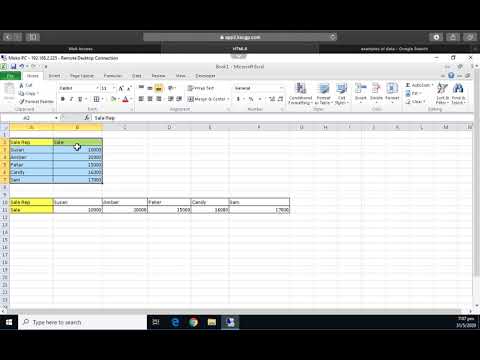5 Simple Excel Calculation Tricks on YouTube

Are you a user looking to enhance your Excel skills? If so, YouTube is a treasure trove of tutorials that can help you master some simple yet powerful Excel calculation tricks. From basic functions to advanced formulas, here are five calculation tricks that you can learn from YouTube videos, enabling you to boost your productivity and impress your peers.
1. Using the VLOOKUP Function for Quick Data Retrieval


One of the most sought-after Excel skills is the ability to look up and retrieve information from a large dataset quickly. The VLOOKUP function is your go-to for this task:
- Select the cell where you want the data to appear.
- Enter the VLOOKUP formula:
=VLOOKUP(lookup_value, table_array, col_index_num, [range_lookup]) - Here,
lookup_valueis the value you want to find,table_arrayis the range of data,col_index_numis the column number in the range containing the return value, and[range_lookup]decides if you want an exact or approximate match.
🌟 Note: Always ensure your data is sorted if you're using approximate match.
2. Mastering Conditional Formatting for Data Visualization


Transform your data into an easily digestible visual format using conditional formatting:
- Select the cells or range you wish to format.
- Go to the Home tab, click on Conditional Formatting, and choose from the options.
- Set rules like highlighting cells based on their values, data bars, color scales, or icon sets.
3. Calculating with Formulas - SUMIF & COUNTIF


For conditional sums or counts, SUMIF and COUNTIF are invaluable:
- SUMIF:
=SUMIF(range, criteria, [sum_range]) - range: The range to be evaluated by criteria
- criteria: The condition to apply
- [sum_range]: Optional; the cells to add if the condition is met.
- COUNTIF:
=COUNTIF(range, criteria)which counts cells that meet the criteria.
4. Excel’s Data Validation for Error-Proofing Entries


Control what data can be entered into your spreadsheets:
- Select the cells you want to apply data validation to.
- Go to Data > Data Validation, and choose your criteria from the list.
- Set up rules like date ranges, number constraints, or drop-down lists.
⚠️ Note: Data validation can help reduce errors but won’t stop intentional incorrect entries.
5. Array Formulas for Complex Calculations


Master array formulas for tasks that require multiple operations:
- Enter your formula as usual but don’t press Enter.
- Instead, press Ctrl + Shift + Enter to enter the formula as an array formula, which allows you to perform multiple calculations in a single formula.
With these tricks up your sleeve, you're on your way to becoming an Excel wizard. Whether it’s for personal finance, professional reporting, or data analysis, these skills are in high demand.
Remember, practice makes perfect. Watching these YouTube tutorials is just the start; implementing them in your work will truly sharpen your skills.
The journey to mastering Excel calculations can seem daunting, but with these simple tricks and the countless resources available online, you're well-equipped to tackle even the most complex spreadsheets with ease. From VLOOKUP to array formulas, each trick brings you one step closer to mastering this versatile software. The world of numbers and data is yours to conquer!
What is VLOOKUP and how does it work?

+
VLOOKUP stands for Vertical Lookup. It searches for a value in the first column of a table array and returns a value in the same row from another column.
Can conditional formatting be used for numbers only?

+
Yes, Excel’s conditional formatting can be applied to numeric, text, date, and even to highlight duplicates.
How can I remember all these Excel functions?

+
By regularly using and practicing the functions, you’ll naturally commit them to memory. Using cheatsheets or Excel’s own formula guides can also help.
Are there any shortcuts to speed up Excel work?

+
Yes, for instance, pressing Ctrl + Shift + Enter creates an array formula. Explore keyboard shortcuts to streamline your workflow.



